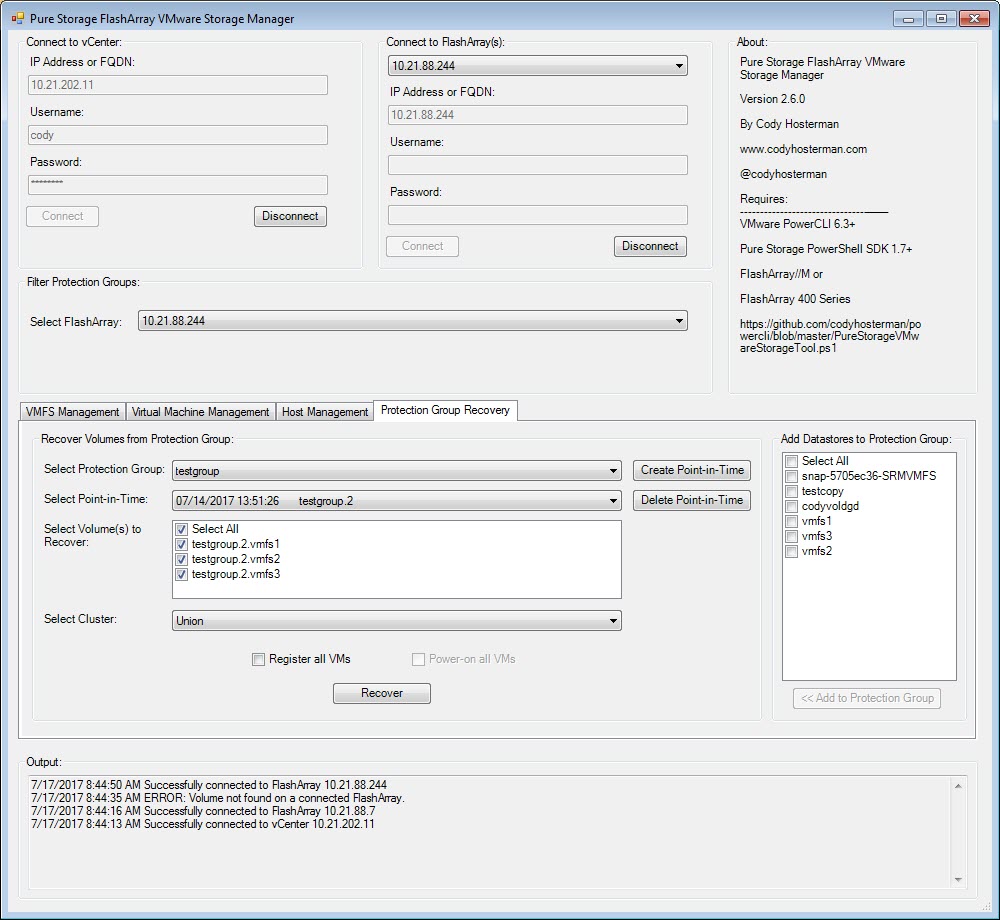One of our continuing goals at Pure Storage is to simplify your life (when it comes to storage and VMware of course, your personal life is your own thing). So as much as possible, we try to reduce the number of things to set in vSphere to “work” better with the FlashArray. We don’t have configuration options on the array, so if we require you to make some kind of settings change on a host that is opened up as a bug internally at Pure: can we make the array respond/behave in a way that the change isn’t necessary?
As of the latest releases of vSphere (in 6.0 and in 6.5) our multipathing best practices are default (Round Robin and IO Operations Limit of 1). So one less thing.
Though there are a few things depending on your environment that need/should be set. Many of these are by default set correctly, so we merely check for those. A few still however need to be changed.
I have updated my blog post here:
FlashArray VMware Best Practices PowerCLI Scripts
See that for details.
Highlights are:
- Improved interactivity of scripts
- Specific cluster support
- iSCSI setting fixes
- VMFS-6 support for auto-unmap
- Improved logging
- Better PowerCLI module handling
- Disk.DiskMaxIOSize support
Enjoy!


